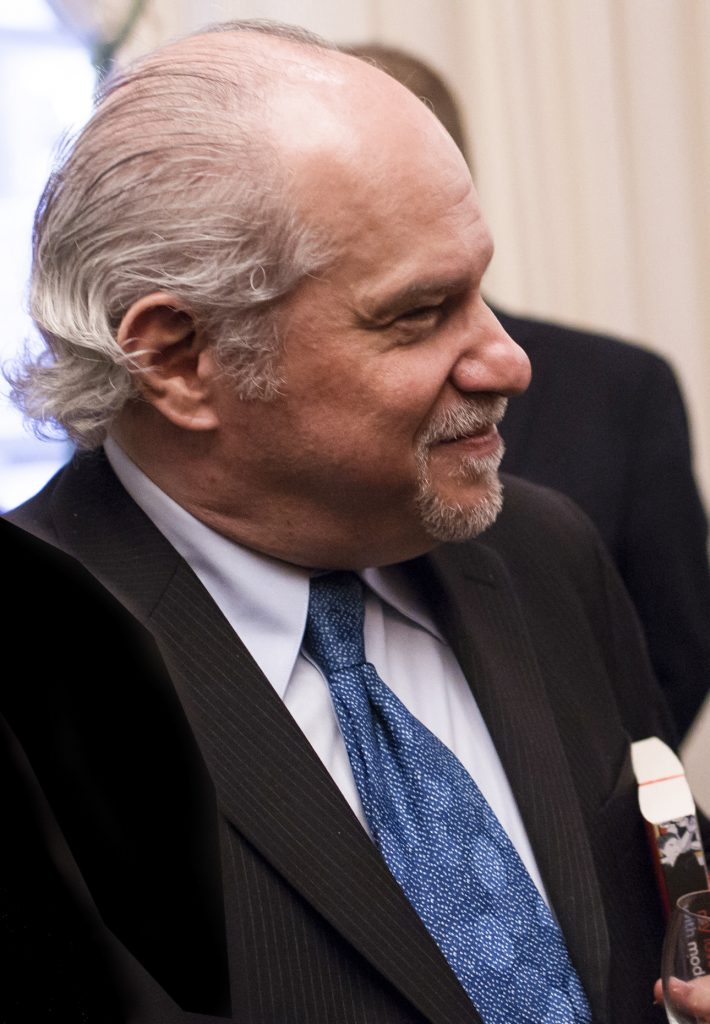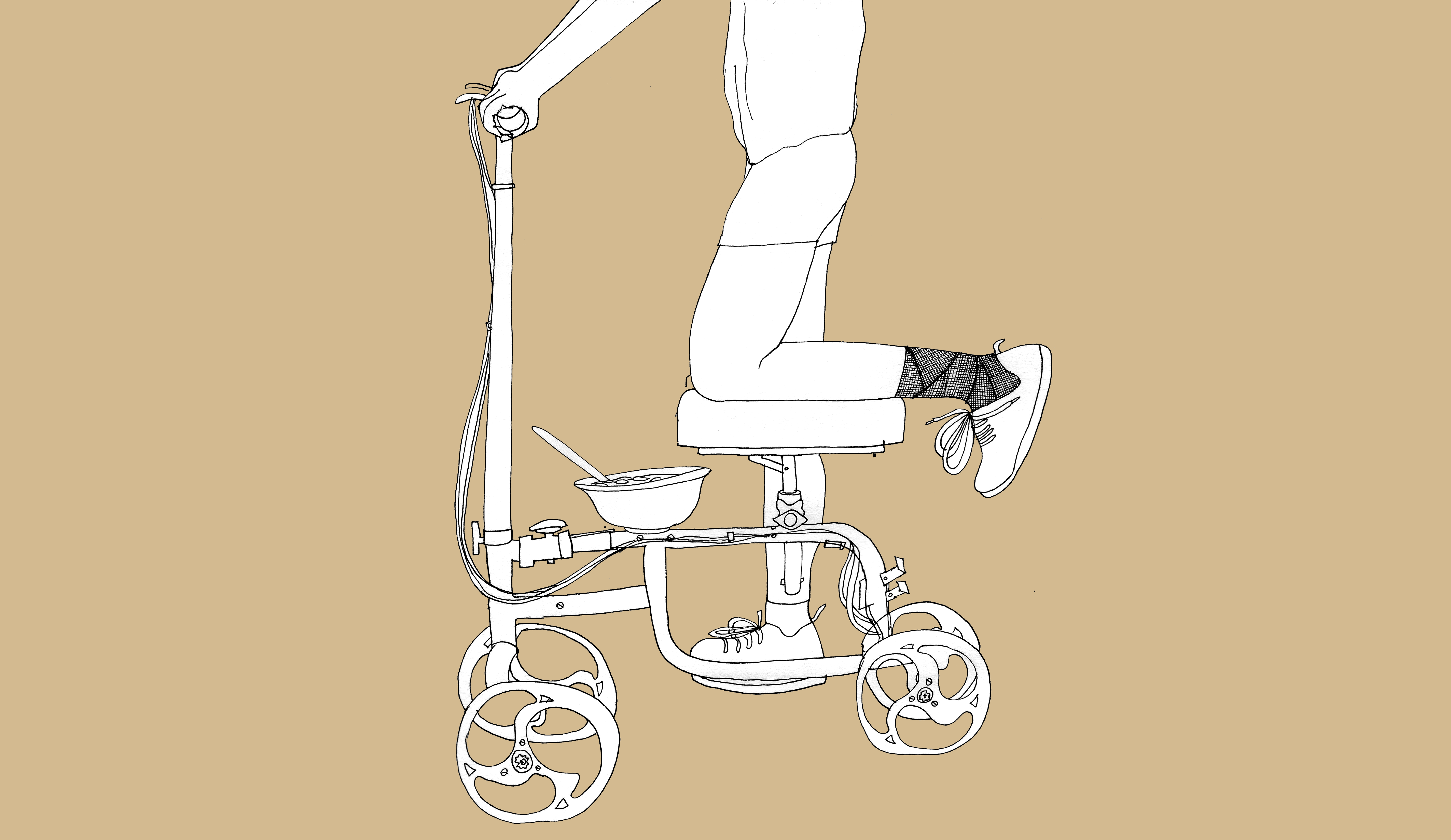
Former colleagues, students, family, and friends gathered in the School of the Art Institute of Chicago’s (SAIC) MacLean Ballroom on November 1st to celebrate the life of longtime SAIC professor and art critic James Yood. Yood was treasured by many in the Chicago arts scene and beyond. An accomplished critic and beloved professor, attendees universally lauded his fundamental kindness and good humor.
Martin Berger, Dean of Faculty and Vice President of Academic Affairs at SAIC, recounted a time, early in his career, when he felt isolated. “Bouncing from adjunct job to adjunct job, people mostly left me alone,” Berger said. “But not Jim. Jim would engage me, ask me what I was interested in, and then bring me articles and essays about the things we talked about. I kind of,” Berger chuckled, “got the sense that he was quizzing me, like a teacher, checking to see if I’d done my reading.”
Berger’s account closely resembles that of a first-year New Arts Journalism (NAJ) graduate student, Luis Lopez Levi. Levi, a full-time reporter already making a decent living, liked the idea of grad school, but needed additional guidance to ensure it was the right next step. Yood, who directed SAIC’s NAJ program for a decade, and who had never met Levi before, was eager to help.
“He wrote me a long, thoughtful response,” said Levi. “He had a surprisingly accurate understanding of my situation, and he gave me great advice. I was really impressed that he took the time.”
Such shows of support to new acquaintances were characteristic for Yood. Anjulie Rao, Editor of Chicago Architect Magazine and SAIC alum, recounted a time when Yood helped her through some recent-transplant culture shock.
“I had just moved to Chicago, and was alone and sad. I went to Jim’s office, this sad, windowless room, and got to telling him about it. He listened carefully, and said, ‘Where’s the lake?’ I pointed generally in its direction, and he said, ‘You’ll be fine.’” Rao believes he was speaking to the process by which people become comfortable in new locations, that it starts with major landmarks, and slowly gets more precise. “He didn’t pick some obscure architectural element, he picked a major landmark. It’s a great symbol: that grounds you, and then you develop from there.”
Yood taught at the School of the Art Institute of Chicago for more than thirty years. Being “one of just a very few critics who also knew Renaissance and Baroque art” — according to remarks made by James Elkins, chair of Art History, Theory, and Criticism at SAIC in a recent interview with Newcity Art — Yood was a fixture in both the Art History and NAJ departments. A prolific critic, Yood was a regional correspondent for Artforum, GLASS magazines, art ltd, and Visual Art Source. He was also managing editor for New Art Examiner from 1983-1988.
His former colleagues spoke passionately on his behalf. Lisa Wainwright, also Dean of Faculty and Vice President of Academic Affairs at SAIC, was the first to speak after President Elissa Tenny’s opening remarks. Ms. Wainwright worked alongside Yood for more than thirty years, first as a fellow Art History professor, and for the final few years, as Yood’s Dean. Her emotionally charged speech centered on Yood’s contribution to Chicago art.
“He fought for art, for Chicago art, for the shared humanity that art seeks to enrich,” she said. “His body would jump when describing art [demonstrates]. I’ll miss seeing him in the hallway, that bundle of happy-happy, twitching the whole time.”
“Shared humanity” came up again during Sue Taylor’s speech. Taylor, Professor of Art History at Portland State University, also spent many years working with Yood. She recounted a disagreement — “which I instigated,” she said — in which she took Yood to task for using the word “our” in an article about a female artist. She believed using such diction was tantamount to coopting women’s stories. But, she said, “Jim, as he often did, argued on the side of empathy, and of shared humanity.”
“He was fundamentally kind,” said Beth Wright, Chair of Faculty and Associate Professor of Liberal Arts at SAIC. “You just don’t expect people to have that, especially people as highly skilled as Jim was.”
Yood’s compassionate nature was complemented by his comedic instincts. “He was so fucking funny,” Lisa Wainwright told F before the service. “I must have heard him say the same jokes ten times, but it was his delivery, he could always crack me up.”
A couple people retold memorable witticisms during their speeches. Sue Taylor remembered: “I lived in Hyde Park. Jim didn’t like Hyde Park because, he said, ‘You have to drive too cautiously. One wrong move and you might run over Saul Bellow.’”
As retold by Andrew Page, Editor of GLASS Magazine: “I told Jim about a time I’d heard a young female student describe attending his lectures as ‘Better than sex.’ Jim was a little flummoxed, understandably. But after collecting himself, he remarked, ‘She must not have much experience.’”
“He waited tables in the Catskills,” added Simon Anderson, Associate Professor of Art History, Theory and Criticism. “I always thought of him as the Borscht Belt Art Critic. He couldn’t resist a joke.”
Equally memorable were his straight-faced appraisals of the art world. Nöel Jones, 2nd year NAJ student, repeated two, verbatim: 1. “The study of art history means understanding the systems of distinction through which legitimacy is conferred,” and 2. “The one thing that no one can escape is their moment in history.” Each, she believed, sought to explain, without excusing, the hegemonic aspects of art history. Jones believed Yood, sensing students’ opposition to the white-male-dominated curriculum, strove to speak both to its shortcomings and to the fact of its precedence.
Perhaps the most succinct summation of Yood’s character came from Lorraine Peltz, Adjunct Associate Professor of Arts Administration and Policy, and Yood’s wife. “He loved art, he loved Chicago, and he loved me,” she said, with unmistakable urgency. “Jim would’ve loved to be here today to listen to all of you tell him how remarkable he was.”
After a chuckle from the audience, she finished by saying, “Lily [our daughter] and I would’ve loved that too.”







